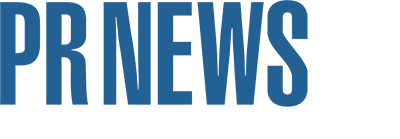In a move that was long overdue, Instagram announced that it would allow for scheduling of posts ahead of time—but with a twist. You can’t schedule a post directly on the app, but you can schedule through one of Instagram’s partners, such as Hootsuite, Sprinklr or Sprout Social. The feature, announced yesterday, has long been on the wish list of social media managers looking to simplify content management on the platform, and is the latest in a series of updates being rolled out for the Instagram Graph API redesign.
Archive: January 2018


Why the Amazon-Berkshire Hathaway-JPMorgan Chase Health Alliance Is Great PR
January 31st, 2018 by Seth ArensteinWhile analysts are scrambling to digest Tuesday’s announcement from Amazon, Berkshire Hathaway and JPMorgan Chase about their new healthcare alliance, the PR perspective, at least at the outset, seems less complicated. It was a tremendous win for the trio of companies in terms of internal and external communications as well as reputation management.

6 Ways to Excel at Media Relations When You Can’t Pitch Puppies
January 30th, 2018 by Steve GoldsteinIn her nearly two decades as a PR pro, Maire Griffin, VP, global communications for the Wyndham Hotel Group, has been a witness to many changes in the PR pro/reporter relationship. What hasn’t changed is the need to work equally hard on relationships with internal and external stakeholders. One feeds into the other, and back again.

Your Brand Can’t Afford a Super Bowl Ad? You Can Still Compete in Twitter’s #BrandBowl
January 30th, 2018 by Jerry AsciertoTwitter announced its first ever #BrandBowl, a competition that will award prizes to brands whose commercials are most often referenced on the platform during the game. But the awards aren’t dedicated only to those who can afford the astronomically priced ad space: One award category gives every brand a fighting chance.

Cutting Through the Data Wilderness: Next-Gen Communicators Preach Data With a Human Heart
January 30th, 2018 by Seth ArensteinThe final article in this 5-part PR News/PublicRelay series about data and measurement profiles three rising communicators leaders. Each of them is a firm believer in data-centric communications, yet none of them is what you’d call a numbers nerd. They all learned to embrace data analysis on the job, not in college.

Edelman Study Urges CEOs to Lead as Trust in Government is Low; Trust Index Way Down in U.S.
January 30th, 2018 by Seth ArensteinThe start of the year means many things: new goals, fresh opportunities and, of course, the annual Trust Barometer report from Edelman. This indicator of global attitudes has been a sobering read during the past few years. It’s not too much different in 2018, although media’s low trust factor hasn’t slipped too much.

The Week in PR
January 30th, 2018 by Seth ArensteinOur weekly roundup of trends, news and personnel announcements in PR and marketing. This week’s stories include several about the Dr. Larry Nassar scandal at Michigan State University, Cision closes its deal to acquire PRIME and Rupert Murdoch suggests Facebook and Google pay for the premium content it carries.

McDonald’s Leads Brands in Average Monthly Number of Unique Photos on Instagram & Twitter
January 30th, 2018 by Seth ArensteinWe know brands and fans of brands take photos and post them on Instagram and Tweeter. So which brands find that their logos are pictured the most on those two visual platforms? Brandwatch looked at 100,000 brands to find out.

Data: U.S. Public Blasts Media Again, So Where Does That Leave Traditional Media Relations?
January 30th, 2018 by Seth ArensteinIt’s not a secret that Americans lack confidence in the media. Here’s another study verifying that point and offering findings that are very close to those contained in the Edelman Trust Barometer. Once again fake news is a huge issue, the study finds.

Follower Bots Exposed: How to Spot Fake Influencers
January 29th, 2018 by Samantha WoodThe practice of buying social media followers has been around nearly as long as social media itself. And it’s still unclear whether platforms like Twitter and Facebook are responsible for weeding out the fake accounts. So, how can a brand separate influencer fact from fiction?
